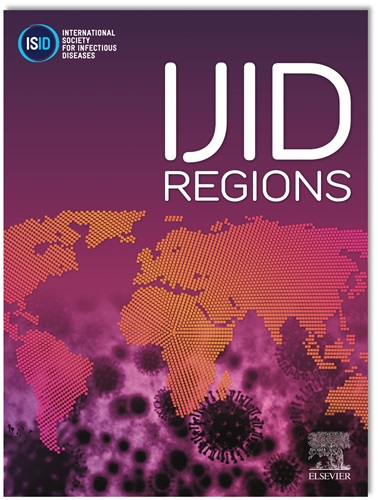1例接受开胸体外膜氧合(ECMO)的儿科患者全基因组测序鉴定出黑穗病菌感染。
IF 4.3
2区 医学
Q1 INFECTIOUS DISEASES
引用次数: 0
摘要
目的:接受体外膜氧合(ECMO)的患者易受真菌感染,也来自罕见或新出现的病原体。我们提出一个病例3岁的男性,住院呼吸衰竭和接受开胸ECMO支持,与真菌感染的病原体无法识别的标准方法。方法:虽然T2假丝酵母(T2 Biosystems)检测结果为阴性,但4天后,革兰氏染色证实血培养结果为真菌阳性。采用Bruker MALDI-TOF质谱系统和Autobio autoof ms1000进行分型,均不能准确鉴定出病原菌。最终,全基因组测序(WGS)直接在血培养上进行。结果:WGS分析显示,在5天内,存在一种属于黑穗菌属的真菌,这是一种在环境中常见的真菌,但很少引起人类疾病。结论:我们报告了第一例接受ECMO的儿科患者的黑穗病菌感染,没有通过标准技术识别,而是通过WGS直接在5天内对血液样本进行检测。尽管缺乏关于黑穗病菌感染治疗的文献,但治疗方法的调整导致了病原体的根除,这表明先进的分子技术对于正确和及时识别这些微生物的重要性。本文章由计算机程序翻译,如有差异,请以英文原文为准。
A case of Ustilago spp. infection identified by whole genome sequencing in a pediatric patient undergoing open-chest extracorporeal membrane oxygenation
Objectives
Patients undergoing extracorporeal membrane oxygenation (ECMO) are susceptible to fungal infections, also from rare or emerging pathogens. We present a case of a 3-year-old male patient hospitalized for respiratory failure and subjected to open-chest ECMO support, with a fungal infection from a pathogen not identifiable by standard methods.
Methods
Although T2Candida panel (T2 Biosystems) resulted negative, blood cultures resulted positive for fungi after 4 days, confirmed by Gram staining. The fungus underwent typing using Bruker matrix-assisted laser desorption ionization-time of flight mass spectrometry system and Autobio Autof ms1000, which could not precisely identify the microorganism. Ultimately, whole genome sequencing (WGS) was performed directly on blood culture.
Results
WGS analysis revealed in 5 days the presence of a fungus belonging to the Ustilago genus, a group of fungi commonly found in the environment but rarely causing human diseases.
Conclusions
To the best of our knowledge, we presented the first case of an Ustilago spp infection in a pediatric patient undergoing ECMO, not identified by standard techniques but only by WGS performed directly on a blood sample in 5 days. Despite the paucity of literature on Ustilago spp infections treatment, therapy adjustments led to the eradication of the pathogen, underscoring the importance of advanced molecular techniques for the correct and timely identification of these microorganisms.
求助全文
通过发布文献求助,成功后即可免费获取论文全文。
去求助
来源期刊
CiteScore
18.90
自引率
2.40%
发文量
1020
审稿时长
30 days
期刊介绍:
International Journal of Infectious Diseases (IJID)
Publisher: International Society for Infectious Diseases
Publication Frequency: Monthly
Type: Peer-reviewed, Open Access
Scope:
Publishes original clinical and laboratory-based research.
Reports clinical trials, reviews, and some case reports.
Focuses on epidemiology, clinical diagnosis, treatment, and control of infectious diseases.
Emphasizes diseases common in under-resourced countries.

 求助内容:
求助内容: 应助结果提醒方式:
应助结果提醒方式:


